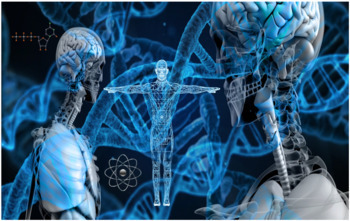Human Anatomy & Physiology Unit 2 Bundle: The Chemistry of Anatomy
- Zip
- Easel Activity
Products in this Bundle (8)
showing 1-5 of 8 products
Bonus
Also included in
- Make teaching Anatomy & Physiology super easy with this highly requested anatomy course growing bundle! SIOP, gifted, and differentiation strategies are embedded and easily identified throughout each unit plan. Lessons are differentiated according to learning style, grouping, and language abilPrice $332.80Original Price $446.97Save $114.17
Description
Make teaching Anatomy & Physiology easy with this combined unit and daily lesson plan that covers 7 blocks or 12 periods of a secondary A & P course. SIOP, gifted, and differentiation strategies are embedded and easily identified throughout. Lessons are differentiated according to learning style, grouping, and language ability. Both content and literacy standards as well as key vocabulary words, essential questions, activating strategies, instructional strategies, and summarizing strategies are included and highlighted.
Use this unit plan alone or get the entire Human Anatomy & Physiology Unit 2 Growing Bundle! This bundle includes:
- Unit/Daily Lesson Plan
- Lab Activity: Basic Chemistry Mini-Lab: Elements and Human Health & Answer Key
- Lab Activity:Chemical Bonds and Reactions: Burning Sugar and Salt
- Unit 2 Powerpoint: Basic Chemistry (The Chemistry of Life)
- Literacy-based Element Project (CER) and Grading Rubric
- Unit 2 Review Questions
- Unit 2 Test & Answer Key
Upon completion of this unit, students will be able to:
Content Standards:
SAP 4: Students will understand the chemical basis for how the body transforms and uses energy and how our cells use crucial molecules.
- a) Examine how our cells use carbohydrates, proteins, lipids, and nucleic acids.
- b) Investigate chemical processes involved in storage and release of energy.
SCSh2. Students will use standard safety practices for all classroom laboratory investigations and activities.
- a. Follow correct procedures for use of scientific apparatus and demonstrate appropriate technique in all laboratory situations.
- b. Follow correct protocol for identifying and reporting safety problems and violations.
Literacy Standards:
- L11-12RST2: Determine the central ideas of conclusions of a text; summarize complex concepts, processes, or information presented in a text by paragraphing them in simpler but still accurate terms.
- L11-12RST3: Follow precisely a complex multistep procedure when carrying out experiments…
Content Objectives (TSWBAT):
- Differentiate between the terms matter and energy and list the four major energy forms used in the body.
- Distinguish between molecules and compounds.
- Compare and contrast the synthesis, decomposition, and exchange reactions.
- Explain the importance of water in body function.
- Identify common salts vital to body functioning and explain how they impact pH levels in the body.
- Compare and contrast the structure and function of carbohydrates, proteins, lipids, and nucleic acids as they relate to anatomy and physiology.
- Locate the major body cavities and list the chief organs in each cavity.
Language Objectives:
- Discuss the role of elements and molecules in the human body.
- Read documented case studies and solve clinical application scenarios related to unit 2 concepts.
- Write, discuss, and use key vocabulary appropriately.
Key Vocabulary: atom, molecule, compound, radioisotope, ionic bond, covalent bond, hydrogen bond, synthesis reaction, decomposition reaction, exchange reaction, heat capacity, inorganic compound, organic compound, solvent, solute, pH, hydrolysis, dehydration synthesis, carbohydrate, monosaccharide, disaccharide, polysaccharide, glucose, triglyceride, unsaturated fat, saturated fat, fatty acid, glycerol, glycogen, trans fat, phospholipid, lipid, amino acid, protein, globular protein enzyme, nucleotides, adenosine triphosphate, adenosine diphosphate



